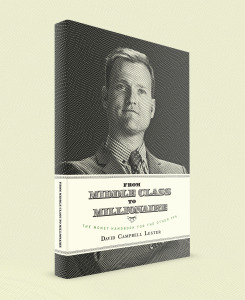It’s tax season and the question on everyone’s mind is what shall I do with my savings? TFSA or RRSPs? Here is a blurb from my book “From Middle Class to Millionaire” on how to choose.
TFSAs Versus RRSPs?
TFSA stands for Tax Free Savings Account and it is kind of the opposite of an RRSP. In an RRSP you put after-tax income into the account, currently up to 18% of your income (we’ve been talking about $24k-ish for 2014), and then you get a return on your income tax–any tax that you paid on the amount you deposited you get back as a tax refund. So, if you contribute $1,000 and you paid 20% tax on that amount, you’ll get $200 back in your tax return. Of course, if you owe for some other reason that’ll be gobbled up because you owe what you owe. And the government loves its taxes!
When you take the money out of an RRSP in retirement, the government taxes it then. So an RRSP is like a tax haven, eventually you have to pay the taxes. The common myth is that you’ll have lower expenses when you retire so you’ll pay less tax but with people living longer and wanting to do even more cool things before they kick it, this is unlikely. No cat food for us. Let’s all save enough for retirement.
For TFSAs you don’t get a tax return but you do get to take the money out at retirement free of taxes. So for all of the growth that you have in your TFSA, you get to keep the profits without paying tax. While there is no tax break upfront, you get a tax break when you take the money out and your growth isn’t taxed. The downside is that you can only contribute $5,500 a year (it was $5,000 from 2009-2012). The TFSA has been around since 2009 and so you can now contribute a total of $31,000, if you were 18 years of age in 2009. You can, however, take it out when- ever you want and it won’t have to be converted to an income- generating account when you turn 71 like an RRSP. So now what do we put in it?
You can’t use it like a savings account either. You need to let your TFSA ride to gain the most yield and tax savings. Keep a high interest account for cash that you might need in the future. It’ll pay you back in the long run.
Plop Your Income Tax Return Into Your TFSA!
A great strategy for TFSAs is to take your tax return and plop it into this account. Why not plunk that away in a TFSA and let it grow year after year? The best way to get the most bang for your buck with a TFSA is to let it grow in the account for the long term. You can count it as your three-month emergency fund but letting it grow and compound will get you your best return.
Don’t forget to contribute before March 2nd, 2015!
Dave










